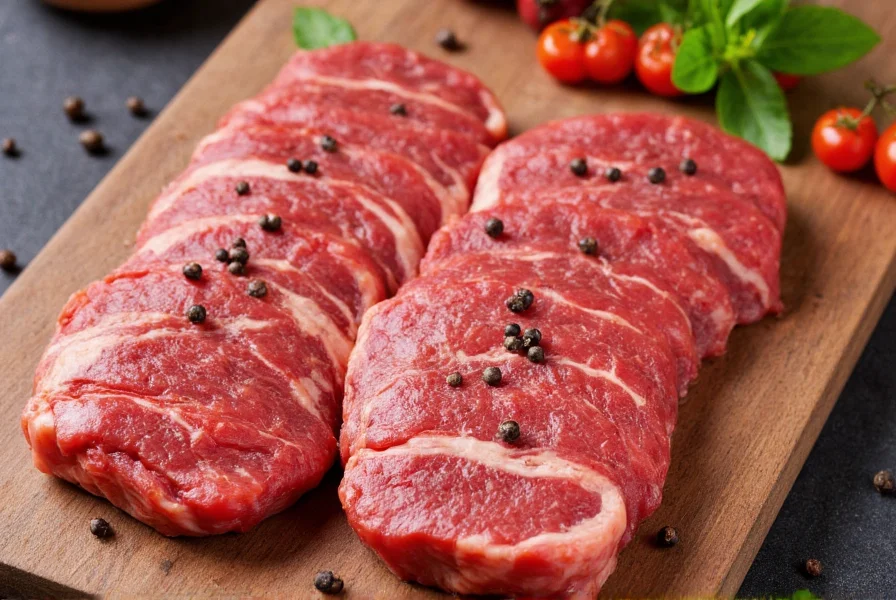For centuries, chefs have relied on the powerful synergy between beef and black pepper. This dynamic duo creates one of the most satisfying flavor combinations in global cuisine. The pungent, floral notes of black pepper cut through the richness of beef, creating a balanced taste experience that satisfies both casual home cooks and professional chefs.
The Science Behind Beef and Black Pepper Pairing
Understanding why beef and black pepper work so well together requires examining their chemical interaction. Black pepper contains piperine, a compound that stimulates taste receptors and enhances savory flavors. When combined with the umami-rich proteins in beef, this creates a flavor amplification effect that makes both ingredients taste more pronounced.
Recent food science research shows that the volatile compounds in freshly cracked black pepper bind with the fatty acids in beef during cooking, creating new aromatic compounds that neither ingredient produces alone. This chemical marriage explains why pre-ground pepper never delivers the same depth of flavor as freshly cracked peppercorns in beef dishes.
Essential Ingredients for Perfect Beef and Black Pepper
The magic happens when you select quality components:
| Ingredient | Recommended Type | Why It Matters |
|---|---|---|
| Beef | Flank steak or sirloin | Lean cuts with good marbling that slice thinly against the grain |
| Black Pepper | Freshly cracked Tellicherry | Larger peppercorns with complex flavor notes and optimal oil content |
| Sauce Base | Oyster sauce + soy sauce | Creates umami depth without overpowering the pepper flavor |
| Thickener | Cornstarch slurry | Helps the peppery sauce cling to beef without becoming gloppy |

Step-by-Step Beef and Black Pepper Stir-Fry Recipe
Follow these professional techniques for restaurant-quality results at home:
Marinating the Beef (15 minutes)
Slice 1½ pounds of flank steak against the grain into ¼-inch strips. Combine with 1 tablespoon Shaoxing wine, 1 teaspoon baking soda, 1 tablespoon soy sauce, and 1 tablespoon cornstarch. Massage gently for 2 minutes, then refrigerate for 15 minutes. This technique, used in authentic Chinese kitchens, tenderizes the beef while helping the sauce adhere.
Preparing the Black Pepper Sauce
The secret to exceptional beef and black pepper lies in the sauce preparation. Heat 2 tablespoons vegetable oil until shimmering, then add 3 tablespoons freshly cracked black pepper. Cook for 30 seconds until aromatic but not burnt. Add 3 minced garlic cloves and 1 tablespoon finely grated ginger, stirring for 15 seconds. Deglaze with ¼ cup beef broth, then add 2 tablespoons oyster sauce, 1 tablespoon dark soy sauce, and 1 teaspoon sugar. Simmer for 2 minutes to meld flavors.
Stir-Frying Technique
Heat your wok until smoking hot—this is crucial for proper searing. Add 1 tablespoon oil, then the marinated beef in a single layer. Let it sear undisturbed for 1 minute before tossing. Cook until 80% done (about 2 minutes total), then remove. Return beef to the wok with the sauce, adding 2 thinly sliced bell peppers. Toss for 30 seconds until the sauce coats each piece. The entire cooking process should take no more than 4 minutes to maintain beef tenderness.
Avoiding Common Beef and Black Pepper Mistakes
Even experienced cooks make these critical errors:
- Using pre-ground pepper - Loses 70% of volatile oils within hours of grinding
- Adding pepper too early - Burns delicate compounds, creating bitterness
- Overcooking the beef - Results in tough, chewy texture instead of tender bites
- Skipping the baking soda marinade - Fails to achieve restaurant-quality tenderness
- Using low heat - Causes steaming instead of proper searing
Variations Across Global Cuisines
While Chinese beef and black pepper stir-fry remains most popular, different cultures have adapted this classic combination:
- French Steak au Poivre - Features coarsely crushed pepper crust seared onto steak, finished with cognac cream sauce
- Vietnamese Black Pepper Beef (Bo Luc Lac) - Cubed beef marinated in black pepper, fish sauce, and sugar, served with pickled vegetables
- Indonesian Lada Hitam - Uses black pepper with additional spices like star anise and cassia bark for complex depth
- Modern Fusion - Incorporates elements like truffle oil or aged balsamic to complement the pepper-beef pairing
Nutritional Profile and Health Considerations
A standard 6-ounce serving of beef and black pepper stir-fry provides:
- Approximately 380 calories
- 32g high-quality complete protein
- Significant iron, zinc, and B12
- Black pepper's piperine enhances nutrient absorption by up to 2000%
For healthier preparation, substitute half the beef with mushrooms to reduce saturated fat while maintaining umami richness. Use low-sodium soy sauce and reduce sugar content by 50% without sacrificing flavor balance.
Perfect Pairings for Beef and Black Pepper
Complete your meal with these complementary sides:
- Rice - Jasmine or basmati rice absorbs the flavorful sauce beautifully
- Vegetables - Broccoli, snap peas, or bok choy add color and nutrition
- Wine Pairing - Medium-bodied reds like Pinot Noir or Syrah complement the pepper notes
- Alternative - Cauliflower rice for low-carb option that still captures the sauce

Storage and Reheating Guidelines
Proper storage maintains quality for up to 3 days:
- Cool completely before refrigerating in airtight container
- Reheat in wok with 1 teaspoon water to recreate steam effect
- Avoid microwave reheating which makes beef tough
- Freeze without sauce components for best texture upon thawing











 浙公网安备
33010002000092号
浙公网安备
33010002000092号 浙B2-20120091-4
浙B2-20120091-4